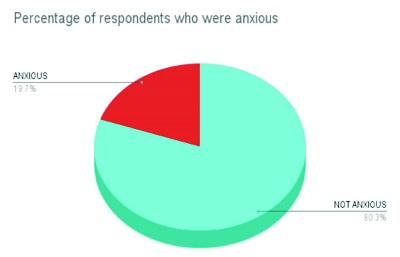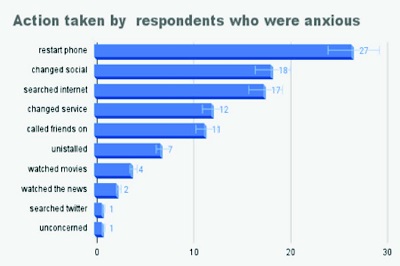
Facebook is one of the popular social media platforms that serves as a source of news, entertainment and a means of communication. It allows its users to sign in to post pictures, interact with others by commenting on their pictures and reacting in the form of emoticons to pictures and posts.
A lot of businesses also thrive on Facebook, using it as a means by which goods and services are advertised and exchanged for money. The above can also be said about Instagram and WhatsApp, moreso WhatsApp.
Facebook, Instagram and WhatsApp are readily available on the phone, very mobile-friendly and as such very accessible. It was therefore a huge source of concern when on 4th October, 2021, there was a massive outage of Facebook, Instagram and WhatsApp, lasting approximately 6 hours, starting from around mid-day.
A lot happened during this phase when three major social media platforms were frozen. Posts by friends could not be accessed, there was also no way of posting any pictures, put up personal posts, download photos, no interaction whatsoever with residual posts.
This development obviously came with feelings of anxiety, fear of the unknown, frantic efforts to find out if it had to do with the network or one’s phone/ device. Fear of missing out “fomo” was also a likely cause of the anxiety that came with not having access to a popular social media platform like
Facebook.
It may have been experienced to various degrees by different people, obviously based on what various people use Facebook for and what needed to be done within the period when the platform was down.
Dr. Delali Fiagbe and his team of researchers set out to sample reactions from facebookers, instagrammers and whatsappers. The findings were intriguing.
METHODS
A google form was sent on
various social media platforms to elicit responses from users of the three major social media applications. Respondents were asked to feel free to provide information as their identity will remain anonymous. The questionnaire was adapted from Beck’s Anxiety Inventory. Data was collected over 48hrs, analysed in excel spreadsheet and results viewed.
RESULTS
Out of 132 persons who responded to the google form, 63.6% were females while 36.4 % were males. Males however had higher mean anxiety scores than females thought not statistically significant t(1,132)=0.4 p=0.3. Ninety-seven percent (97%) interacted most frequently with WhatsApp, followed by Instagram and then Facebook.
The amount of time in minutes spent on social media ranges from 5 minutes to 300 minutes in a day. An average of 200 minutes per day was spent around the three social media platforms all together.
When asked if participants were scared after the outage, 66.7% were not scared at all, 18% were mildly scared, 12% were moderately scared, while 3% were severely scared.
In another question, where participants were asked if they found it hard to relax, 51.5% did not find it hard to relax, 12.1% had mild difficulty in relaxing, 21.2% had moderate relaxation impairment, 10 participants representing 15.2% had marked difficulty to relax.
Overall some 19.3% of respondents were anxious while 80.3% were not bothered.
Respondents were asked what they did when they realized the social platforms were frozen. This will interest you.
Of the number surveyed, 26.5 % restarted their phones, 18.2% changed to other social applications to keep connected, 17.4 % searched internet for the cause of the outage, 12.1% changed network providers on their phones, 11.4% called friends on regular
line to verify what the problem was, 6.8% uninstalled their social media applications, another 6.8% watched movies, 2.3% watched the news, others were unconcerned while others searched twitter.
We also found that the anxiety scores correlated positively with time spent on social media. In other words, respondents who spent more time on social media were more likely to experience anxiety than those who spent short periods on social media platforms F(1,132)=12.99 P<0.001
DISCUSSION
We noticed from our survey that more females use social media handles than their counterpart males. This has been corroborated in an article by Brian Dean showing that about 56% of social media users in Northern America are female akin to statistics in South Africa.
Males however had higher anxiety scores perhaps the males first discovered the anomaly with the platform and begun exploring avenues to circumvent it, leading to higher anxiety scores.
Of the three platforms that went frozen on October 4, 2021, WhatsApp was the most utilized social media platform, hence the anxiety experienced after the outage might be attributed to WhatsApp downtime.
The findings here are consistent with observations published on Essence [https://www.essence.com/news/facebook-instagram-whatsapp-outages].
We also noticed that the more time respondents spent on social media platforms, the higher the likelihood of getting anxious if the social media platforms were inaccessible.
This survey, carried out online has a chance of obtaining misleading answers as there was no personal touch. Hence, the findings, although significant, cannot be generalized to all populations.
CONCLUSION
We are accurately aware that a six-hour outage of the three major social media platforms had socio-economic ramifications for the tech companies as well as individuals, thus this survey highlighted the psychosocial costs of the outage on October 4, 2021.
We implore users of social media platforms to take time off to study how dependent they can become on social media and take appropriate measures to forestall anxiety attacks that may accompany subsequent outages.





